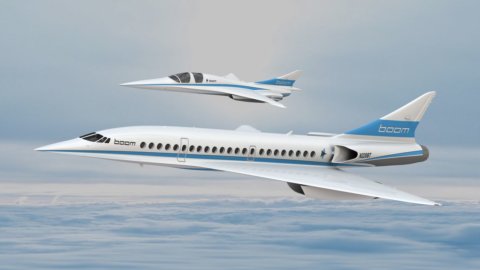From Milan to New York in three hours. Or, if you prefer, from Rome to Sydney in seven. These are the travel times of boom, the new supersonic aircraft in progress at Boom Technology, an American startup financed, among others, by the owner of Virgin Richard Branson. The idea is to put an end to the long purgatory of super-fast aircraft, which began in 2000 when the Concord it crashed immediately after take-off from Paris (113 dead) and continued with 11 September and with the increase in oil and maintenance prices, which made the costs of a flight unsustainable.
Today, however, the Anglo-French supersonic jet could find its heir, thanks also to technological innovations that allow more accessible prices. Boom is a strong candidate for this role: it will be 52 meters long and will have a wingspan of 18, but, above all, it will be able to reach a maximum speed of 2.2 Mach, i.e. 2.716 kilometers per hour, over twice the speed of sound.
Inside the plane there will be 42-50 seats and the ticket, as Erin Fisher, Head of flight controls of the project explains, "will have the same prices as a traditional Business class flight, 5 euros round trip on transatlantic flights, although obviously the fare will be chosen by the individual companies”,
However, some time will pass before Boom's debut. The first tests for the two-seater prototype will begin later this year, while tests of the actual aircraft will arrive in 2020. In the meantime, however, there would already be buyers, including the Virgin, which would have optioned 10 specimens. Estimates speak of a request for 1.317 aircraft in the period 2023-2032, at a price of 187 million euros for each jet.
Passengers, continues Erin Fisher, "won't even realize they're flying faster than the speed of sound." The new jet will have a cruising altitude of 60 feet, i.e. 18,3 km, against the 35-40 (10,7-12,2 km) of long-haul aircraft in service today: will fly higher therefore, and will make it possible to "halve the flight times of over 500 routes".




